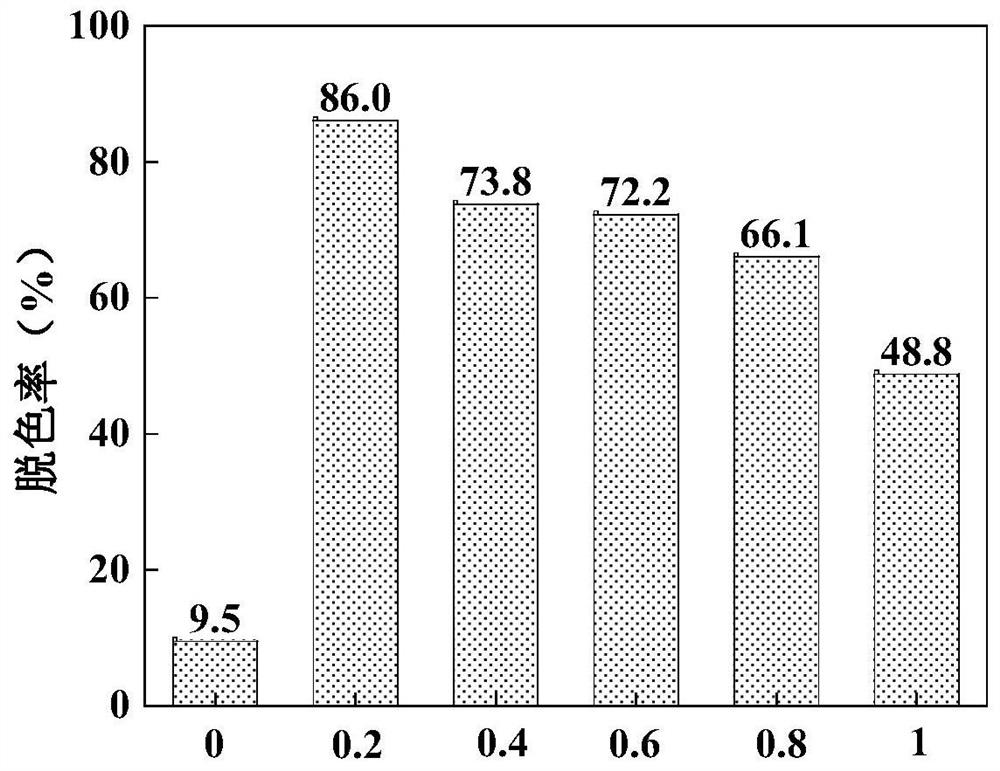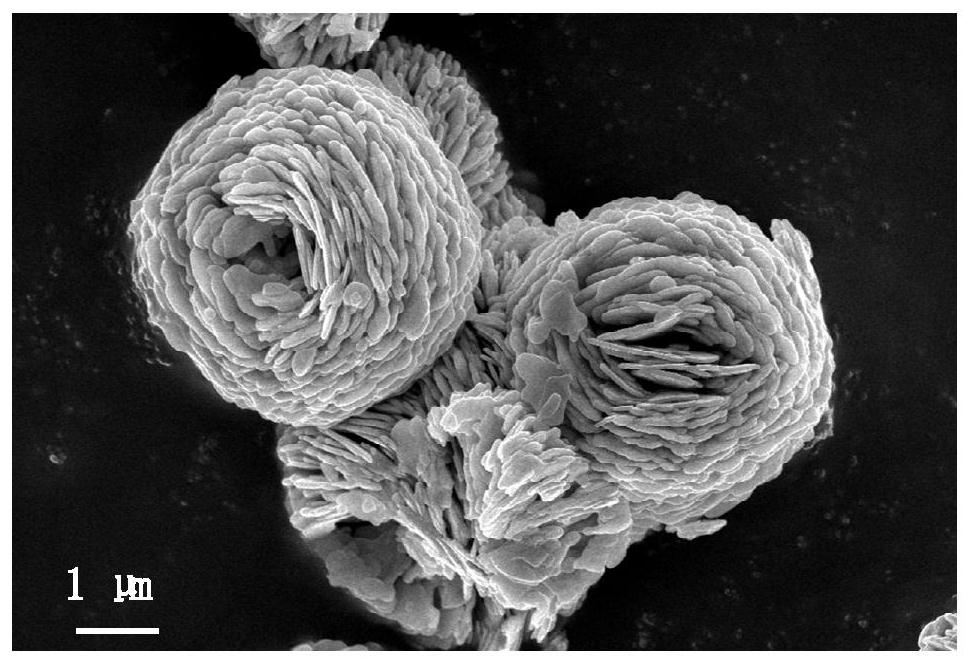Biochar doped BiOBrxCl < 1-x > photocatalyst, preparation method and application
A photocatalyst, biochar technology, applied in physical/chemical process catalysts, chemical instruments and methods, water/sludge/sewage treatment, etc. Limits and other issues to achieve the effect of saving resources, reducing consumption, and high stability
- Summary
- Abstract
- Description
- Claims
- Application Information
AI Technical Summary
Problems solved by technology
Method used
Image
Examples
Embodiment 1
[0035] Example 1: BiOBr 0.2 Cl 0.8 Preparation of photocatalyst:
[0036] (1) Weighing 9.7014g of bismuth nitrate pentahydrate and 2mL of concentrated nitric acid with a mass fraction of 68% were dissolved in 20mL of deionized water, and stirred to obtain a transparent liquid; In deionized water, quickly mix the two solutions with stirring.
[0037] (2) Centrifuge the obtained suspension at 5000r / min, collect the white precipitate, wash it with deionized water three times, dry it in the air at 60°C, and then calcinate it in the air at 300°C for 1h to obtain BiOBr 0.2 Cl 0.8 .
[0038] (3) Take 25mg BiOBr 0.2 Cl 0.8 Add 10mg / L RhB (50mL) solution, react in the dark for 30min to achieve adsorption-desorption equilibrium, then turn on a 350W xenon lamp for visible light catalytic degradation, and add a filter with a cutoff wavelength of 420nm.
[0039] According to above-mentioned method, adjust the ratio of ammonium bromide and ammonium chloride, prepare following photoca...
Embodiment 2
[0041] Embodiment 2: biochar doping BiOBr 0.2 Cl 0.8 Preparation of photocatalyst
[0042] (1) Wash the dust on the surface of the bamboo leaves with deionized water, dry them in an oven at 60° C., and grind them with a pulverizer to obtain bamboo leaf powder. The bamboo leaf powder that takes by weighing 8.00g is dissolved in the ZnCl of 350mL 1mol / L 2 In the solution, after stirring, use a 0.22 μm filter membrane to filter and wash, put it in a 60°C oven for drying, add 10mL deionized water and 8.00g NaOH for activation treatment, and store in a sealed oven for drying at 60°C. The product was placed in a quartz tube furnace for 2h, 750°C cracking reaction. Wash the cracked powder with water to neutrality and then dry at 60°C to prepare biochar. The structure of the prepared biochar is as follows: image 3 As shown, it can be seen from the transmission electron microscope image of the biochar prepared in this example that the biochar (BC) has a regular floc structure with...
Embodiment 3
[0048] Embodiment 3: biochar doping BiOBr 0.2 Cl 0.8 Preparation of photocatalyst
[0049] (1) Wash the dust on the surface of the bamboo leaves with deionized water, dry them in an oven at 60° C., and grind them with a pulverizer to obtain bamboo leaf powder. The bamboo leaf powder that takes by weighing 8.00g is dissolved in the ZnCl of 400mL 1mol / L 2 solution, stirred and washed with 0.22 μm suction filter, placed in a 60°C oven for drying, then added 10mL deionized water and 8.00g NaOH for activation treatment, sealed and stored in a 60°C oven for drying. The product was placed in a quartz tube furnace for 2.5h, 750°C cracking reaction. The cracked powder was washed with water to neutral and then dried at 60°C to prepare biochar.
[0050] (2) Weighing 9.7014g of bismuth nitrate pentahydrate and 2mL of concentrated nitric acid with a mass fraction of 68% were dissolved in 20mL of deionized water, and stirred to obtain a transparent liquid; In deionized water, quickly m...
PUM
 Login to View More
Login to View More Abstract
Description
Claims
Application Information
 Login to View More
Login to View More - R&D
- Intellectual Property
- Life Sciences
- Materials
- Tech Scout
- Unparalleled Data Quality
- Higher Quality Content
- 60% Fewer Hallucinations
Browse by: Latest US Patents, China's latest patents, Technical Efficacy Thesaurus, Application Domain, Technology Topic, Popular Technical Reports.
© 2025 PatSnap. All rights reserved.Legal|Privacy policy|Modern Slavery Act Transparency Statement|Sitemap|About US| Contact US: help@patsnap.com



